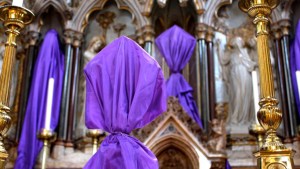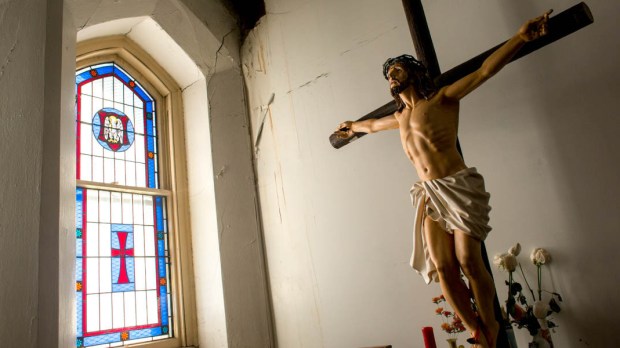Lent is a beautiful season in the liturgical calendar of the Catholic Church, one that has multiple dimensions that aren’t always immediately perceptible. In particular, the Church has traditionally divided the season of Lent into two parts to help us focus on two separate spiritual realities.
According to the St. Andrew Daily Missal these two parts have specific themes and even their own “nicknames” in the liturgical calendar of the Extraordinary Form.
Lent is made up of two parts. The first begins on Ash Wednesday, called in the liturgy “the beginning of the fasting days,” and ends on the Saturday before Passion Sunday [the Fifth Sunday of Lent].
The second consists of the “Great Fortnight” known as Passiontide. This part is an anticipated development of the first act or sorrowful mystery of the Paschal drama: it considers henceforth the interior sufferings of Christ more than the feelings of penitents and catechumens, as did the first part.

Read more:
What is Passiontide?
In other words, the first half of Lent is focused on “us,” our sinfulness and need for repentance. The liturgy urges us to put on “sackcloth and ashes” and to repent of our sins. This part of Lent helps us to focus on interior renewal, preparing our hearts to receive the light of Christ into our lives.
The second half of Lent turns our gaze especially onto the suffering Christ. We begin to enter into his Passion and the events that lead up to his betrayal and death. This part of Lent helps us to understand the results of our sins and the amazing love Jesus has for us, that led him to willingly give up his life for sinners. It presents an opportunity to meditate more specifically on the Passion of Christ, such as it is depicted in the Stations of the Cross.
The Church in her wisdom understands the need to give us specific spiritual themes to mediate on during Lent, gradually preparing our hearts for the great feast of Easter, when Jesus Christ conquered sin and death and opened to us the gates of Heaven. We must prepare our hearts for such a wondrous gift and these two parts of Lent help us do exactly that.
Read more:
Why do Catholics cover crucifixes and statues during Lent?

